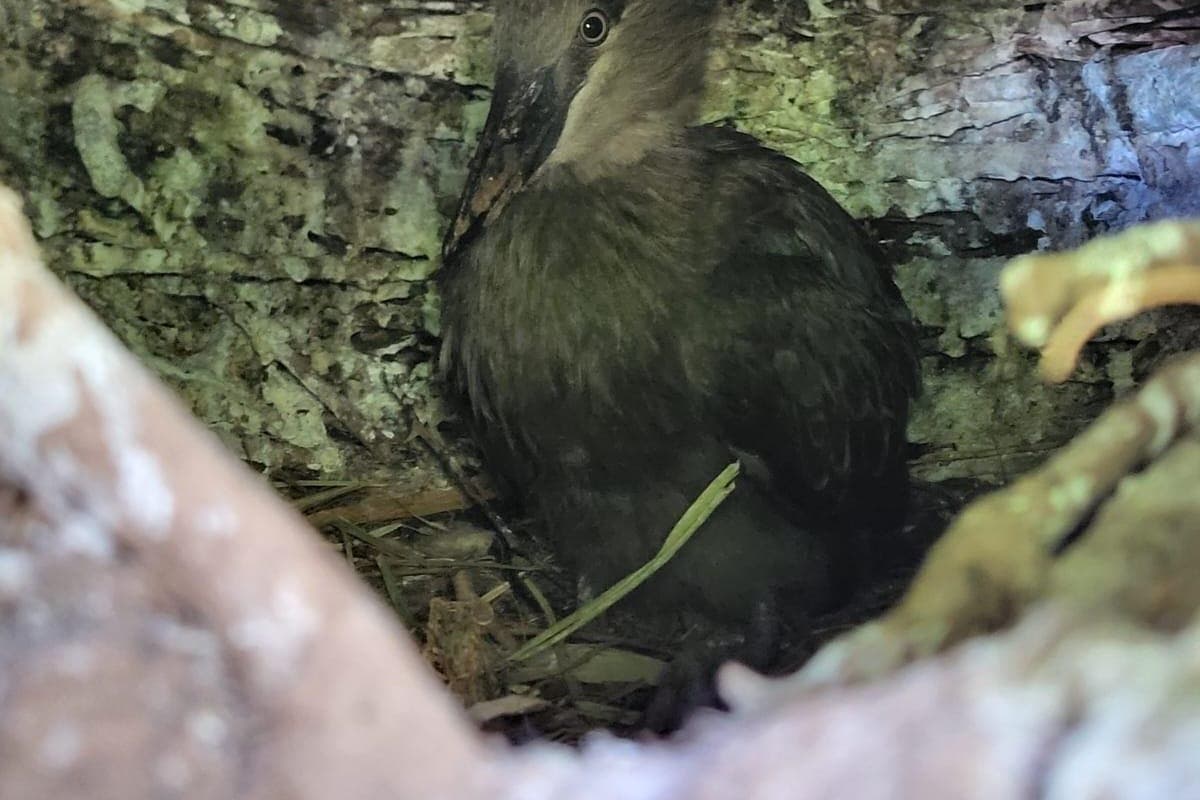Zoo’s hamerkop chick joins parents on branch after fledging
A zoo spokeswoman said that cameras in the aviary had managed to capture the moment Buxton first fledged the nest.

Your support helps us to tell the story
From reproductive rights to climate change to Big Tech, The Independent is on the ground when the story is developing. Whether it's investigating the financials of Elon Musk's pro-Trump PAC or producing our latest documentary, 'The A Word', which shines a light on the American women fighting for reproductive rights, we know how important it is to parse out the facts from the messaging.
At such a critical moment in US history, we need reporters on the ground. Your donation allows us to keep sending journalists to speak to both sides of the story.
The Independent is trusted by Americans across the entire political spectrum. And unlike many other quality news outlets, we choose not to lock Americans out of our reporting and analysis with paywalls. We believe quality journalism should be available to everyone, paid for by those who can afford it.
Your support makes all the difference.Keepers at a Hampshire zoo are celebrating the birth of a baby hamerkop.
The chick, named Buxton, has begun to leave its nest six weeks after being hatched to parents Jack Hamer(kop) and MC Hamerkop at Marwell Zoo near Winchester.
A zoo spokeswoman said that cameras in the aviary had managed to capture the moment Buxton first fledged the nest and flew to join its parents on a tree branch.
She added: “A new addition to our hamerkop family has fledged the nest six weeks after hatching in the zoo’s walkthrough aviary.
“The hamerkop chick is already quite difficult to distinguish from its father and mother as they grow very quickly in the first few weeks of their life.
“Keen observers may note slightly fluffier feathers and a less sleek, fluffier crest on the youngster, who has been named Buxton.
“Keepers aren’t sure of the new arrival’s sex just yet but report that the chick is doing well and gaining confidence since fledging the nest on July 17.”
The spokeswoman said that in the wild hamerkops are found in tropical Africa, Madagascar and south-west Arabia.
The bird gets its name from the Afrikaans word for “hammerhead” because of the distinctive shape of its head.
They live in wetlands enjoying shallow waters, rivers, streams and pools where they fish for tadpoles, shrimp, small fish and frogs whilst wading with insects and rodents also forming part of their diet.
Hamerkops build enormous nests which can be almost 5ft across, often in the fork between the trunk of a tree and a branch, which are made from sticks and mud.
Jonathan Newton, senior animal keeper, birds, said: “Hamerkops build a large nest built primarily with sticks and mud but items such as weeds and other items they find are also added.
“The nest can take from three to six weeks to build with the entrance hole situated near the base of the nest which allows just enough room for the adult birds to fly in and out.
“Both parents care for the chick and will continue to do so for the first few weeks after fledging.”
The zoo spokeswoman said that hamerkops were listed on the International Union for the Conservation of Nature’s Red List as Least Concern and populations were currently thought to be stable.